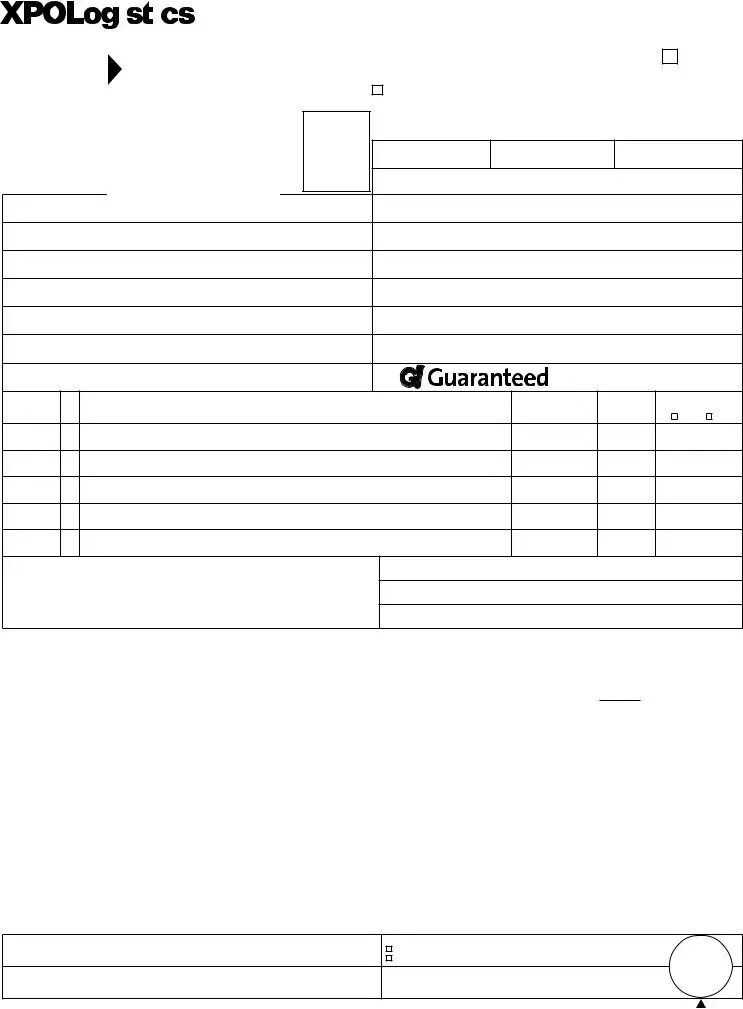What is a Bill of Lading and why is it important?
A Bill of Lading (BOL) serves as a crucial document in the shipping process. It functions as a receipt for the goods being transported, a contract between the shipper and the carrier, and sometimes as a document of title. This form outlines the specifics of the shipment, including details about the origin, destination, and nature of the goods. Properly completing the BOL is essential, as it facilitates the smooth transfer of goods and helps to minimize disputes regarding shipment terms.
What information is required on the Xpo Logistics Bill of Lading?
The Xpo Logistics Bill of Lading requires several key pieces of information, including the shipper's and consignee's names and addresses, the type and quantity of goods being shipped, any special packaging or handling instructions, and payment terms. Additionally, if the shipment involves hazardous materials, specific markings like the UN/NA ID number must be provided. Accuracy in filling out each section is vital to ensure compliance and facilitate the shipping process.
What do the terms "Freight Charges Prepaid" and "Collect" mean?
"Freight Charges Prepaid" indicates that the shipper has paid for the shipping costs upfront. In contrast, "Collect" means that the consignee will be responsible for paying these charges upon receipt of the shipment. This distinction affects the financial transaction associated with the delivery and should be clearly marked on the Bill of Lading to avoid confusion among parties involved.
What happens if the cargo is damaged or lost during transport?
If damage or loss occurs, the liability of the carrier is limited, as specified in the terms of the Bill of Lading. For shipments originating in the U.S., the carrier's liability may range from $1.00 to $25.00 per pound for lost or damaged items. Shippers can declare excess value by providing the necessary details and paying an additional charge. The terms also outline the maximum liability, which is critical for shippers to understand to ensure they have adequate coverage for their cargo.
How can a shipper increase the carrier’s liability limit?
To increase the carrier's liability limit, the shipper must declare an excess value on the Bill of Lading. This involves stating the total value of the shipment in a specified section of the document and agreeing to pay an additional charge for this increased coverage. Note that the total declared value cannot exceed $650,000.00 per shipment, so shippers should review their needs carefully when making this decision.
What are the special requirements for hazardous materials?
When transporting hazardous materials, the Bill of Lading must include specific information such as the UN/NA ID number, proper shipping name, hazard class, and packing group. This information is crucial for compliance with safety regulations. The shipper is responsible for ensuring that all hazardous materials are accurately described and labeled to avoid penalties and ensure safe transport.
What should a shipper verify before signing the Bill of Lading?
Before signing the Bill of Lading, shippers should verify that all information is complete and accurate. This includes checking the addresses of the shipper and consignee, the description of the goods, the declared value, and any special handling instructions. Additionally, it's important to ensure that any applicable terms, conditions, and tariffs are understood. This thorough verification can help prevent issues later in the shipping process.
Can the Bill of Lading be modified after it is signed?
Once the Bill of Lading is signed, it generally becomes a binding contract, and any changes can be complicated. However, it might be possible to amend it if all parties involved agree. It's advisable to document any amendments formally and make sure that new agreements are clearly outlined to avoid potential disputes or confusion later on.
Where can I find more information about the terms and conditions related to the Bill of Lading?
More information regarding the terms and conditions associated with the Xpo Logistics Bill of Lading can be found online at www.xpo.com. Shippers can access the current Tariff CNWY-199 and the National Motor Freight Classification (NMFC) guidelines. Additionally, customer service representatives can provide assistance and clarification for specific questions related to shipping processes.

